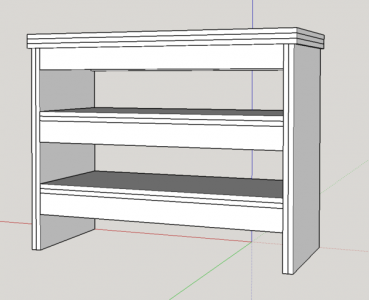- Joined
- May 17, 2016
- Messages
- 13
Hey guys, hoping one of you might be able to help me out with this. I'm receiving a PM-1022V lathe today and need to build a stand for it. The lathe weighs around 370 lbs and is 42" long in total. I've drawn up an idea for a stand in SketchUp, screenshot below.

The stand is based on these plans: http://www.popularwoodworking.com/projects/ultimate-lathe-stand
I realize the lathe featured in the article is nowhere near the weight of my metal lathe, but I'm thinking that laminated plywood with knockdown joints should be seriously strong. Any thoughts? My scaled-up design will use close to three sheets of ¾" plywood, so it will be plenty heavy. I am not a welder (yet) or else I'd built it out of metal. Thoughts?

The stand is based on these plans: http://www.popularwoodworking.com/projects/ultimate-lathe-stand
I realize the lathe featured in the article is nowhere near the weight of my metal lathe, but I'm thinking that laminated plywood with knockdown joints should be seriously strong. Any thoughts? My scaled-up design will use close to three sheets of ¾" plywood, so it will be plenty heavy. I am not a welder (yet) or else I'd built it out of metal. Thoughts?

